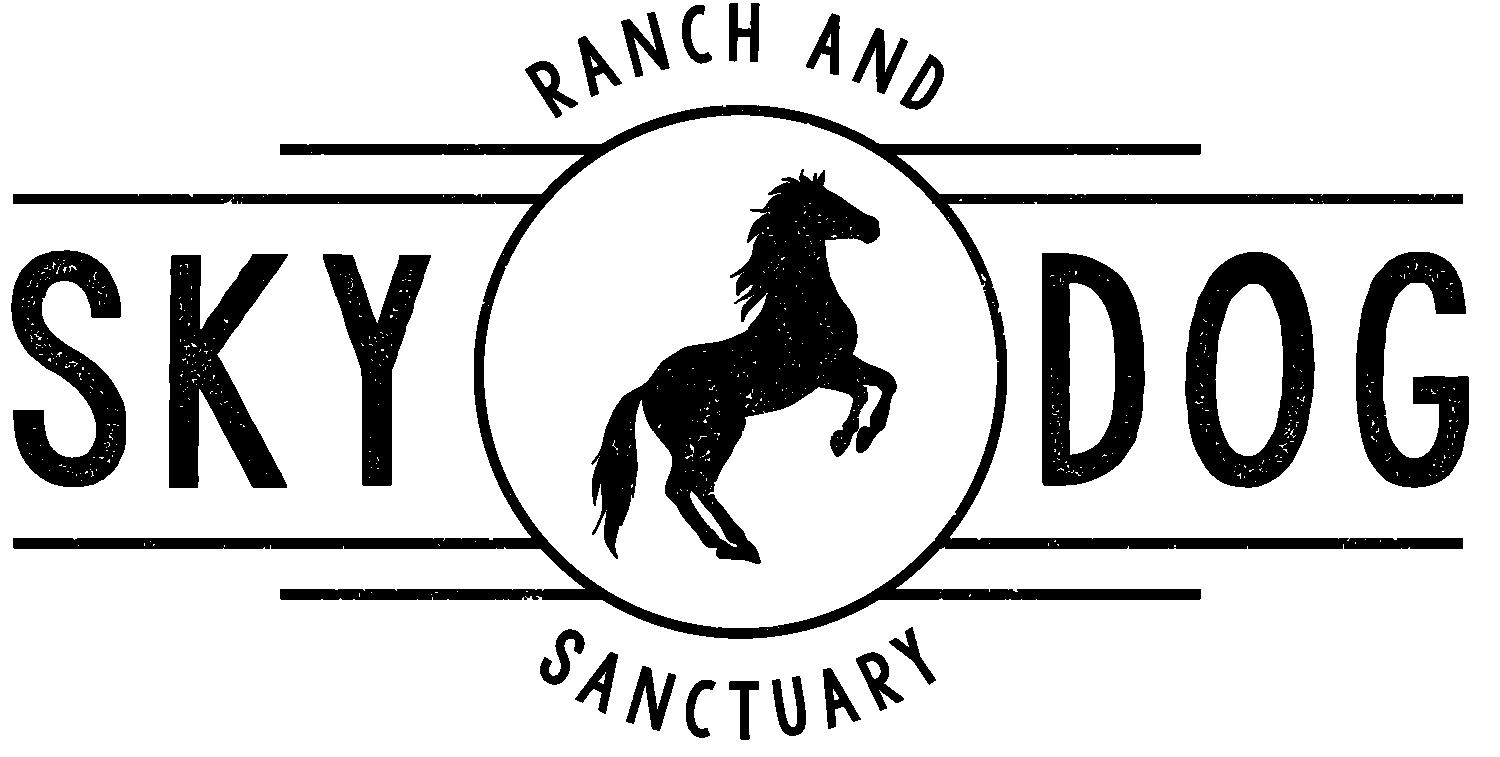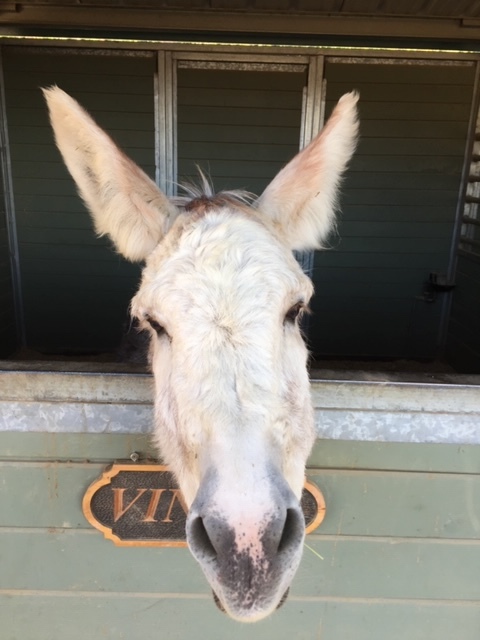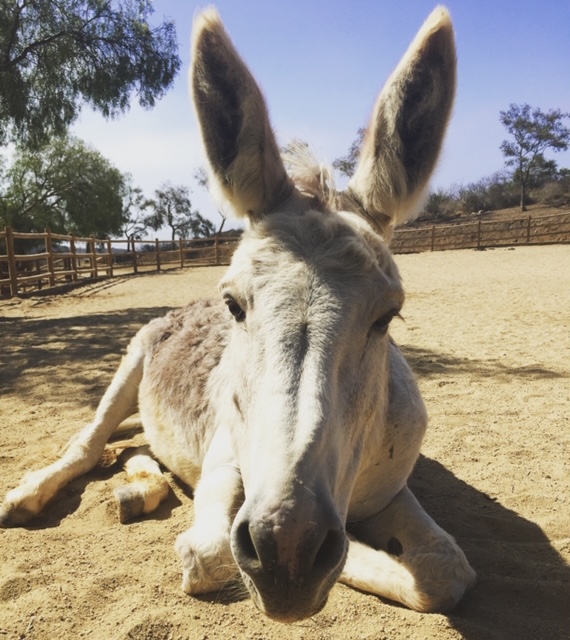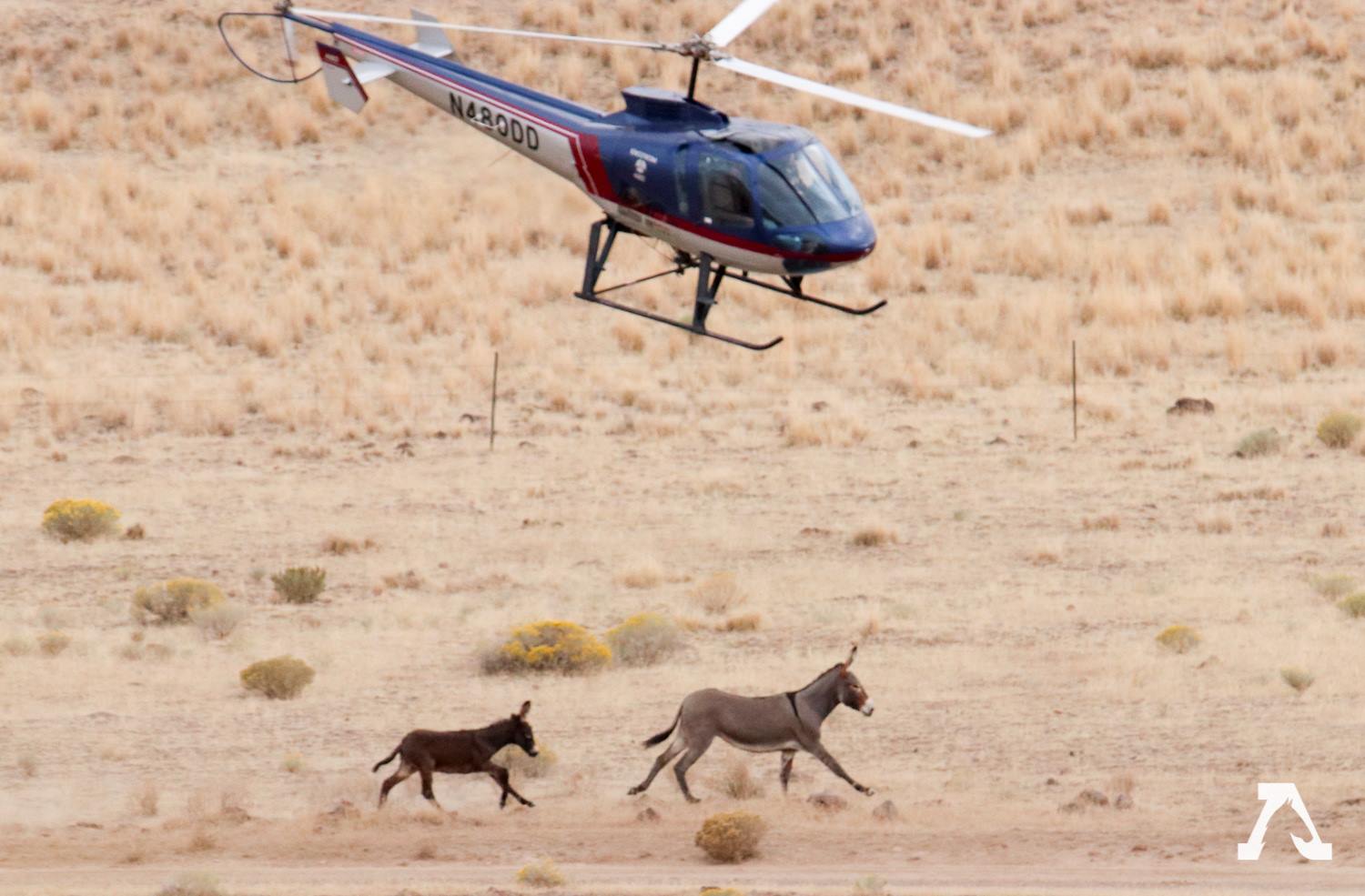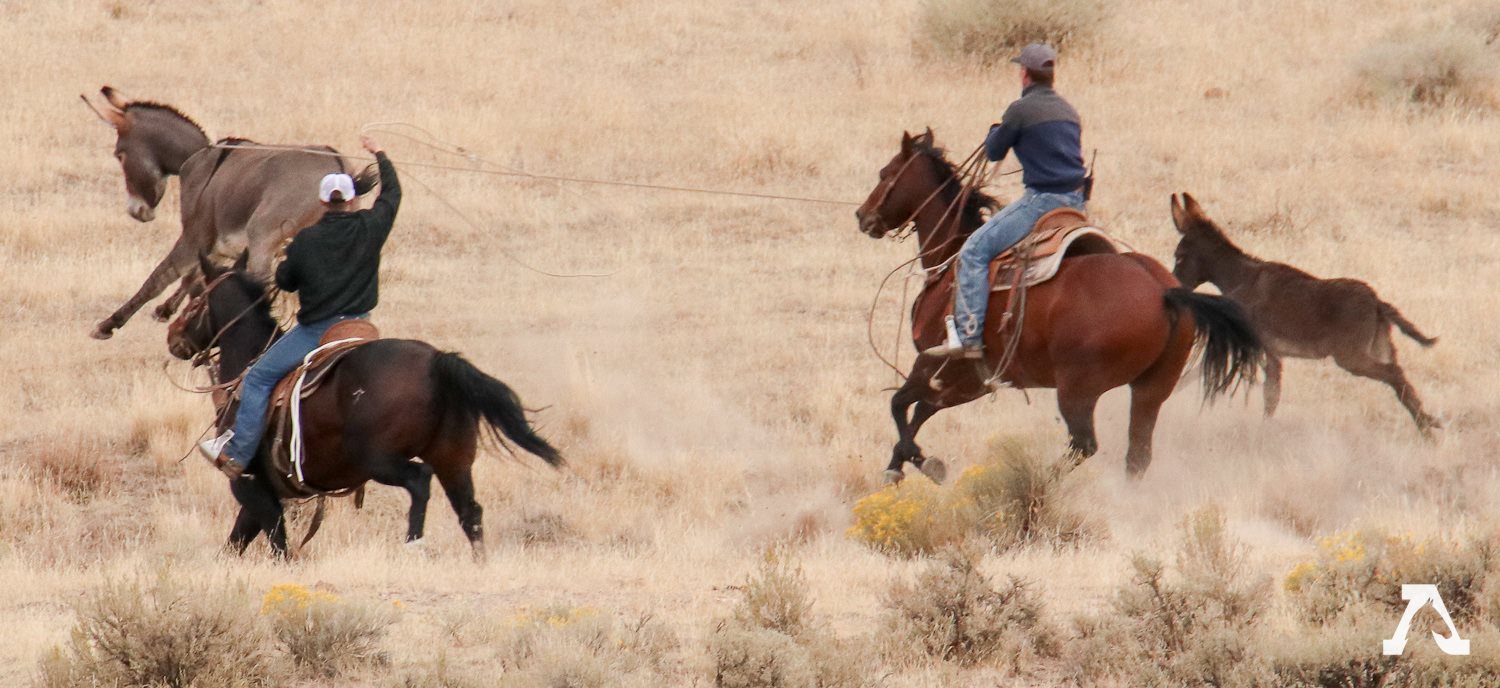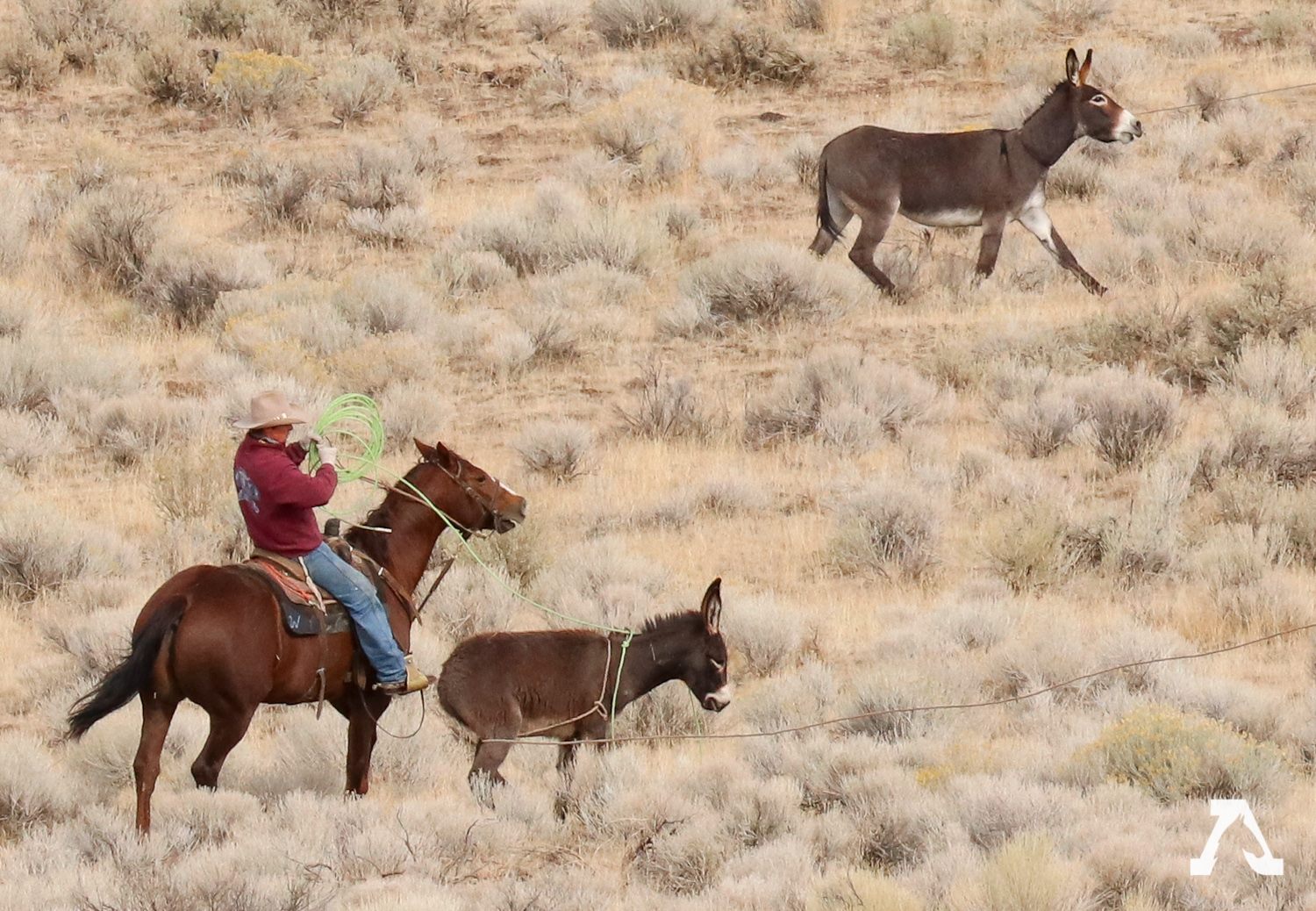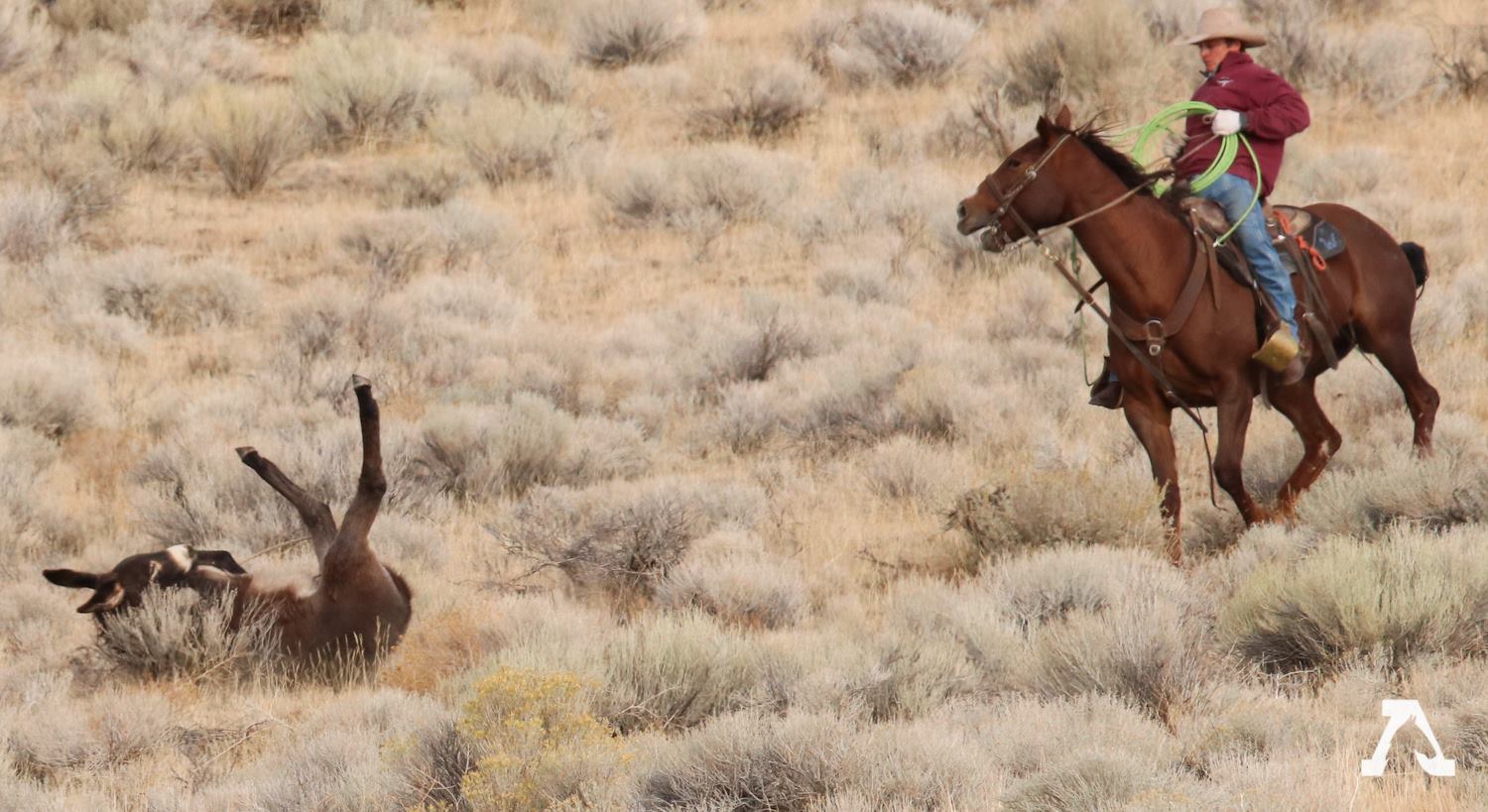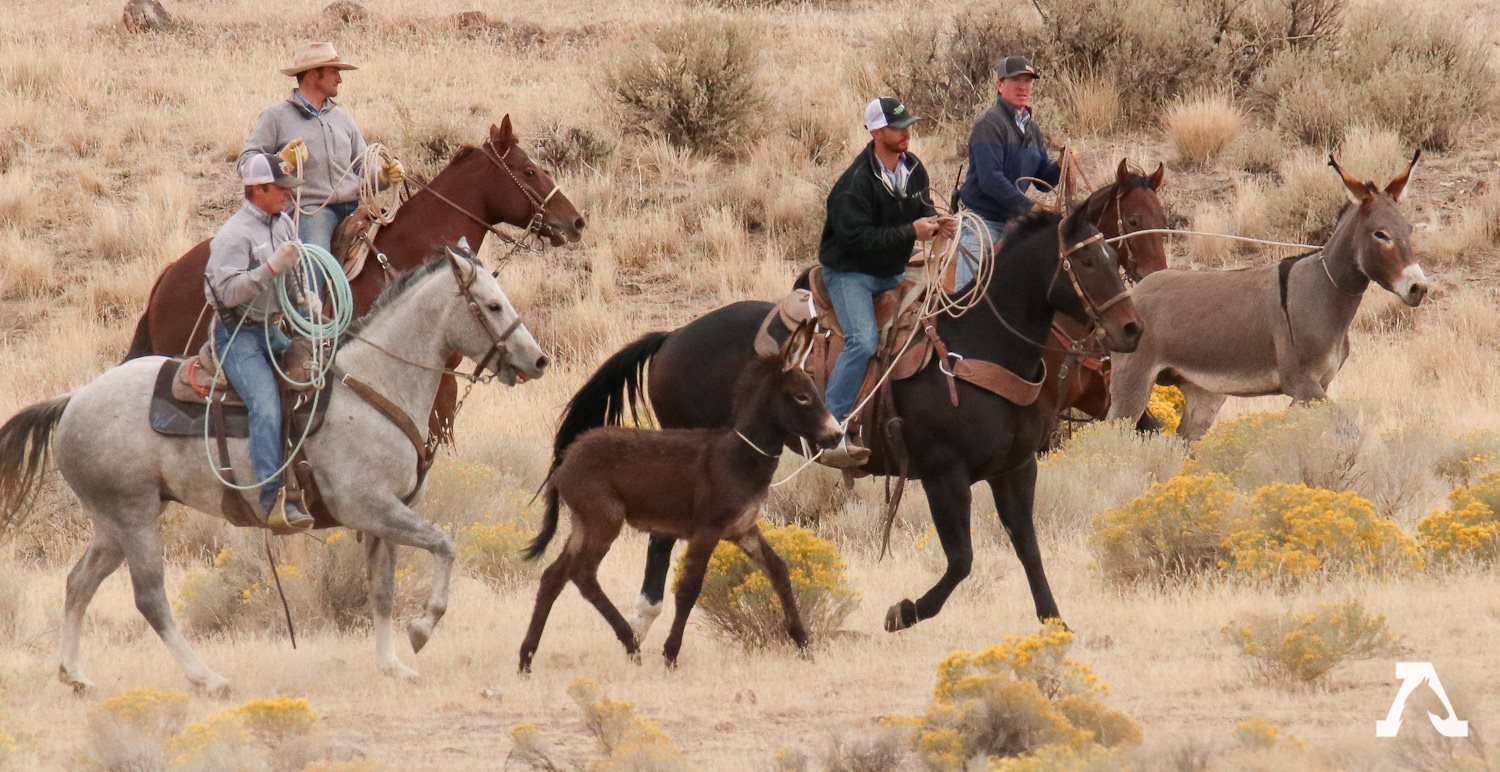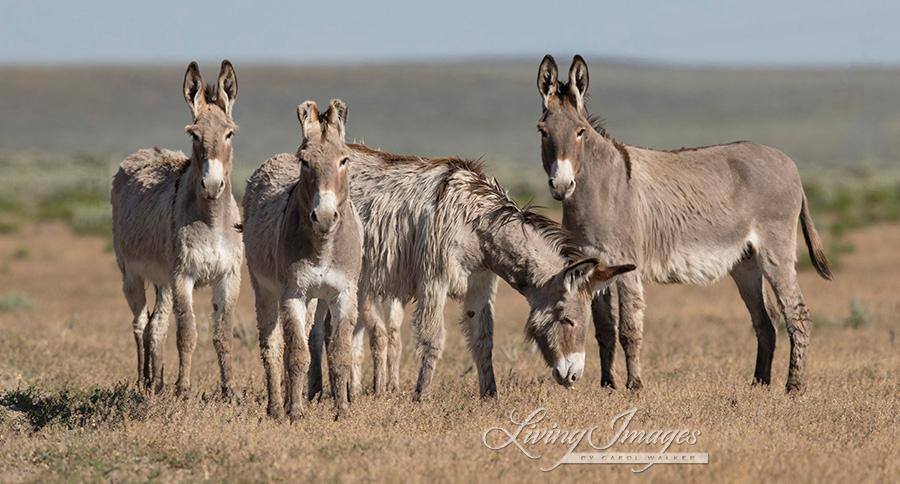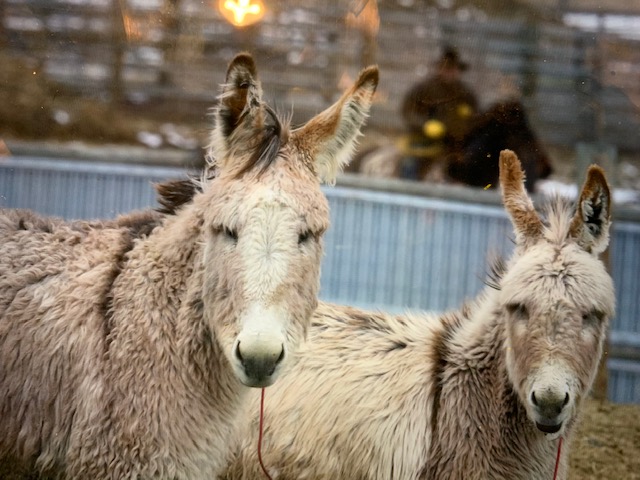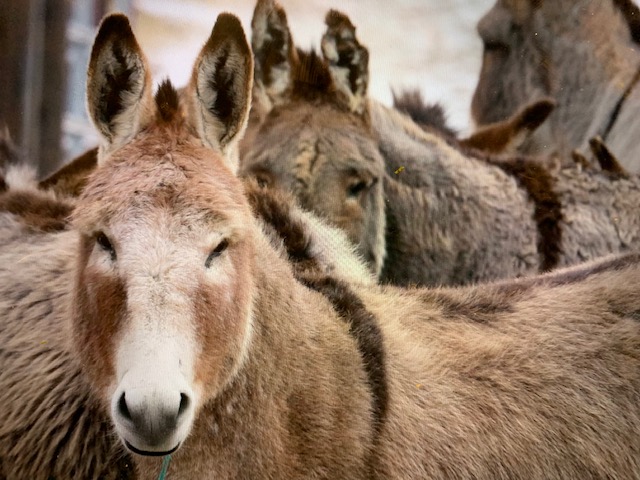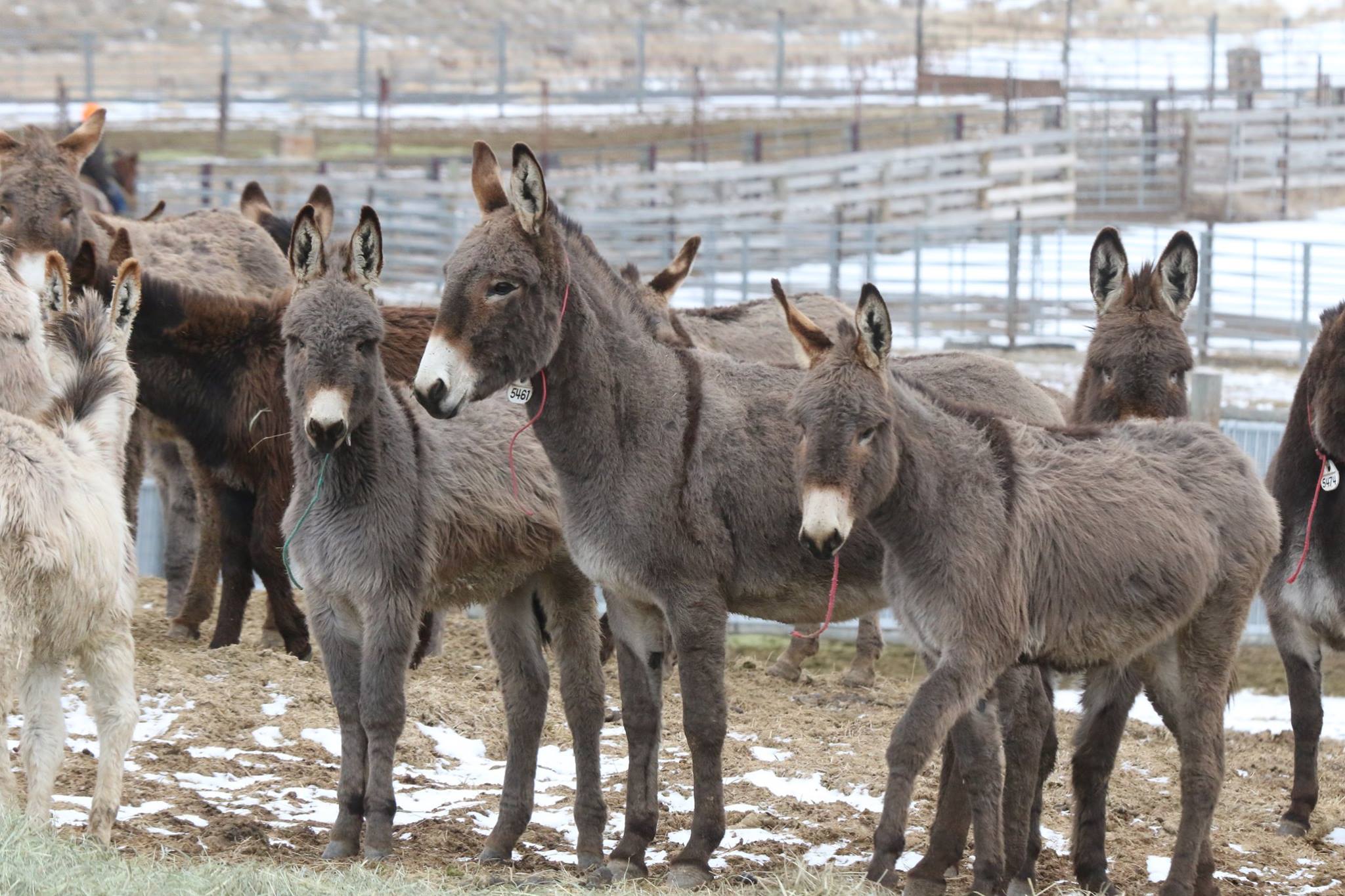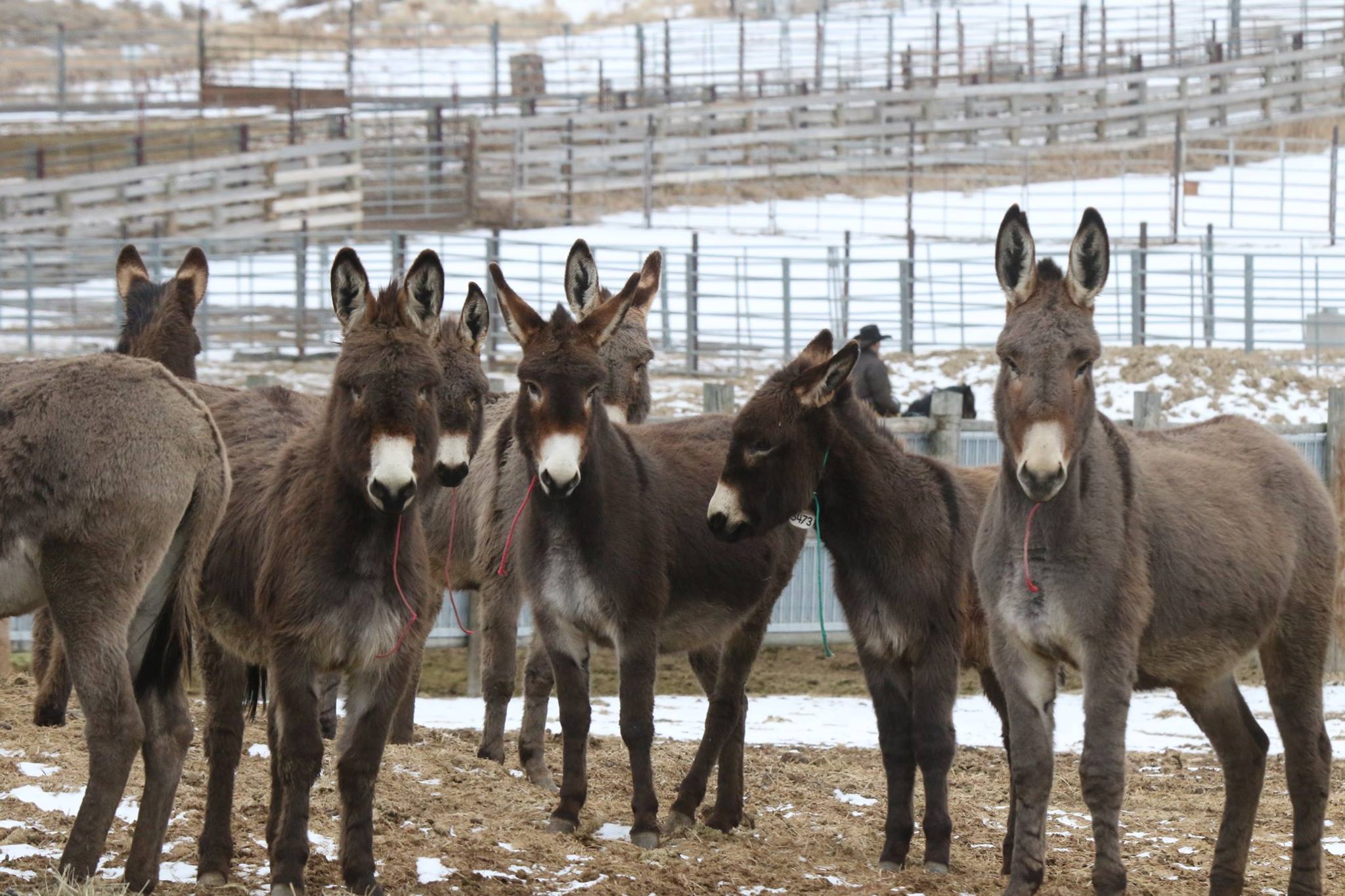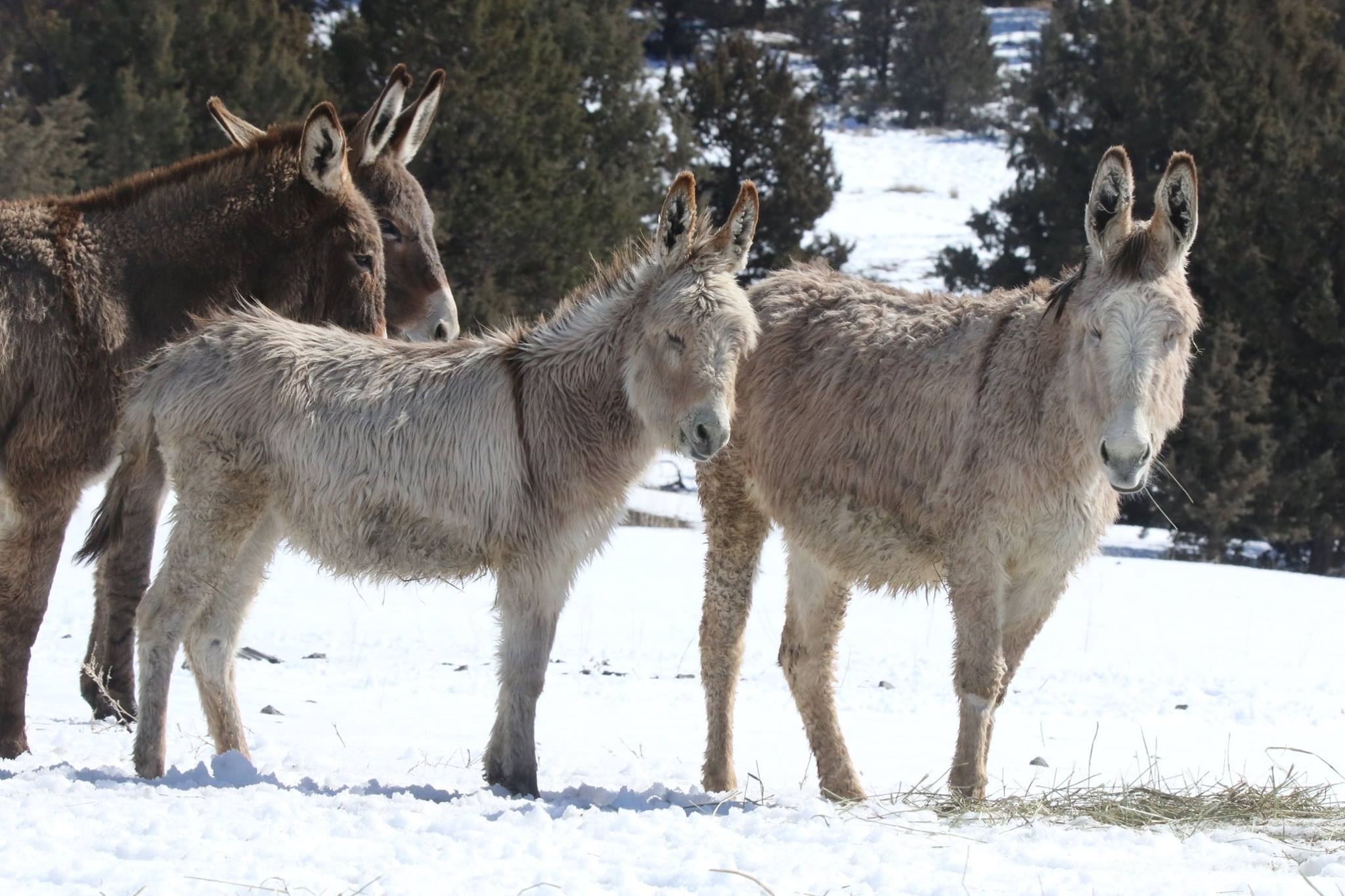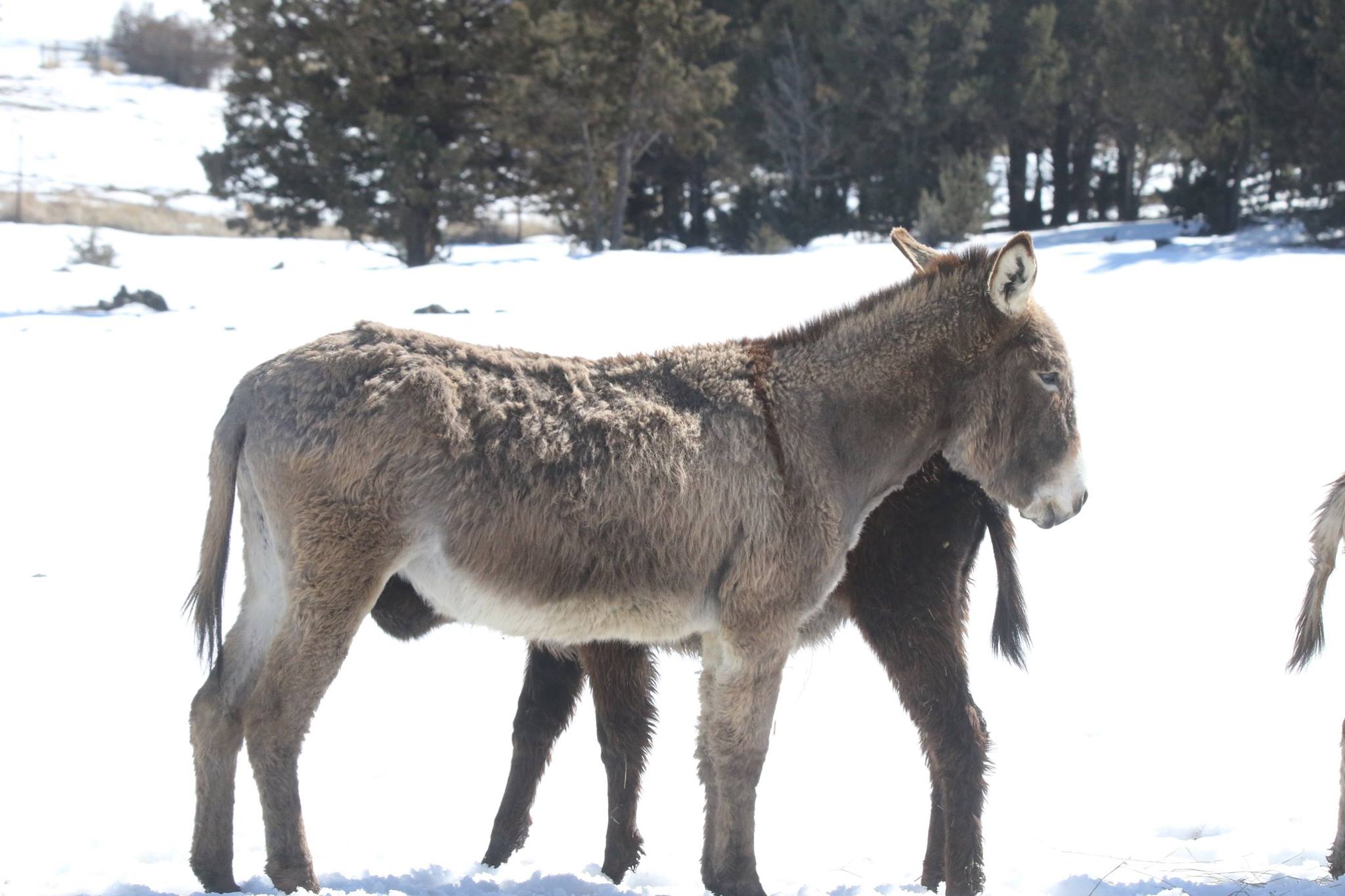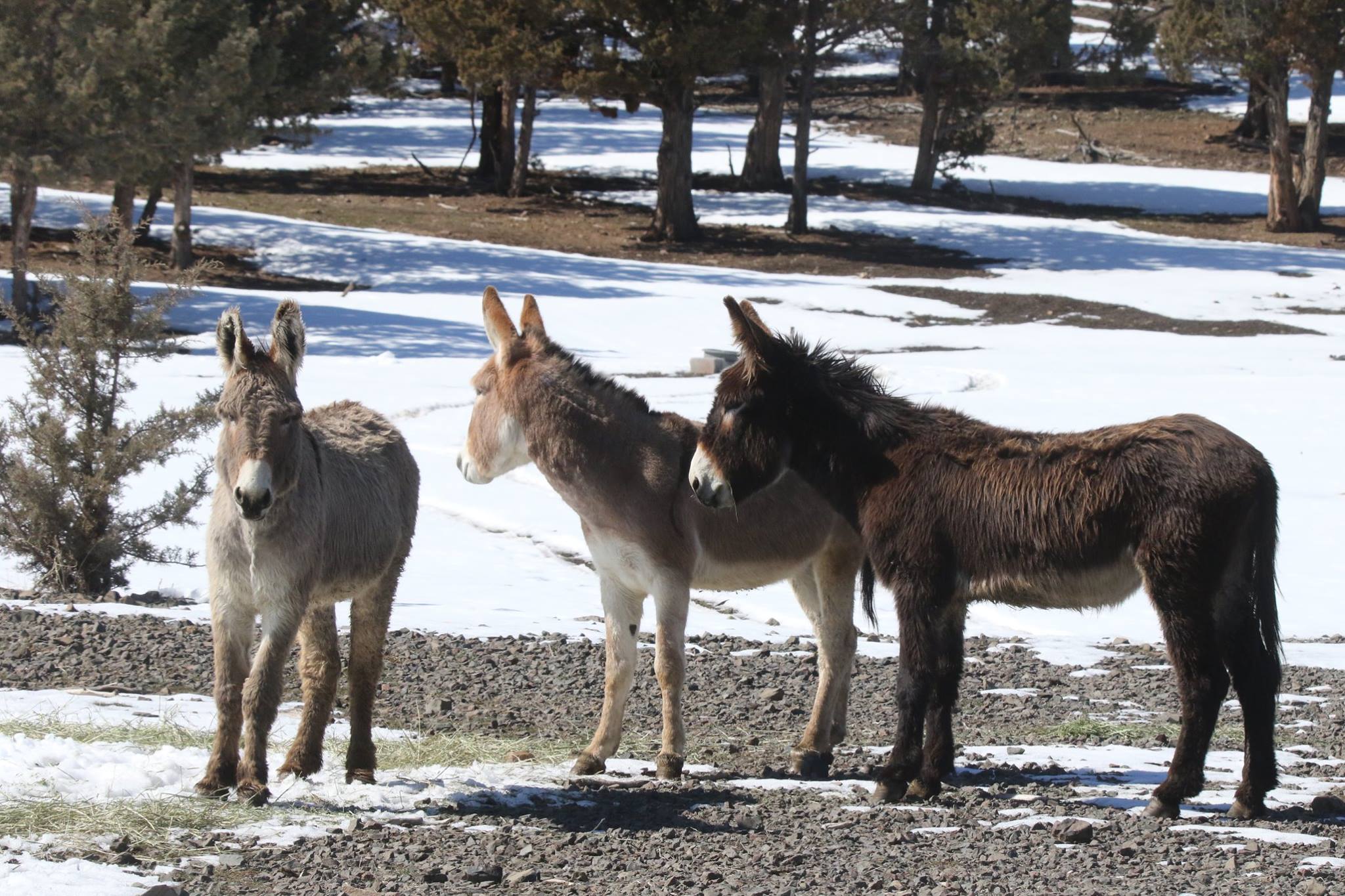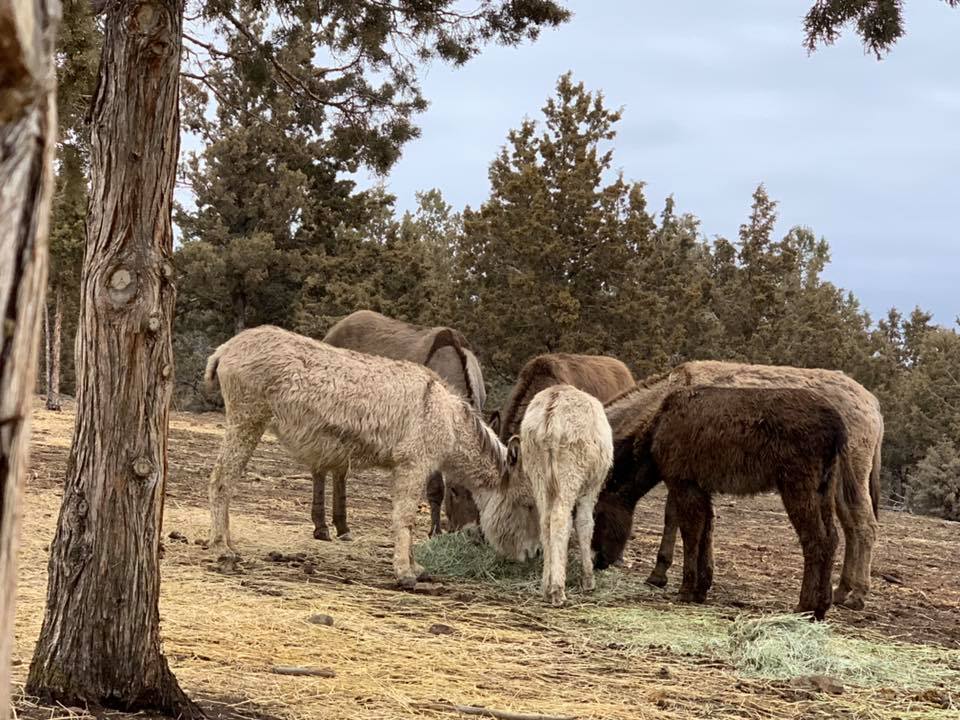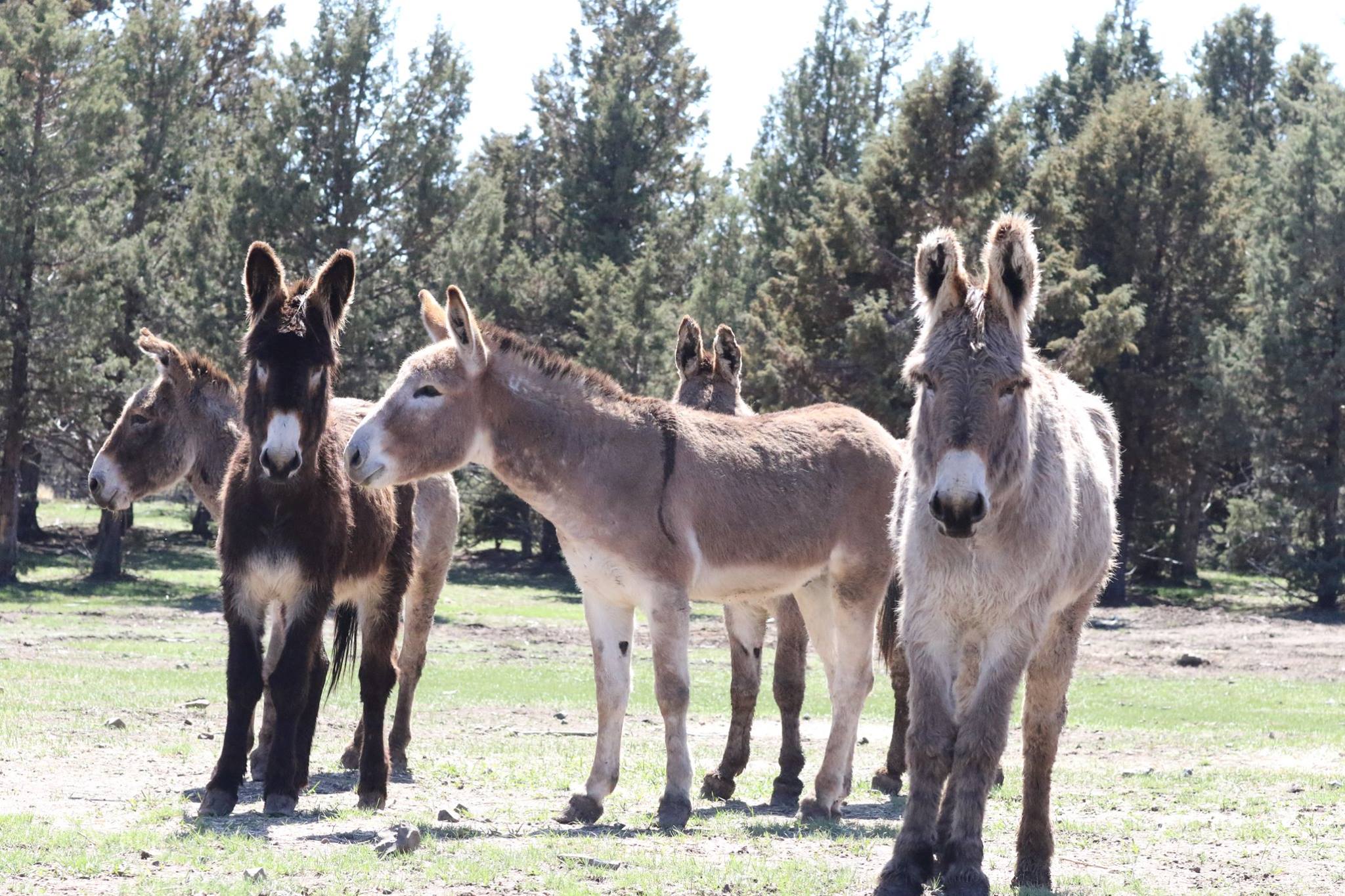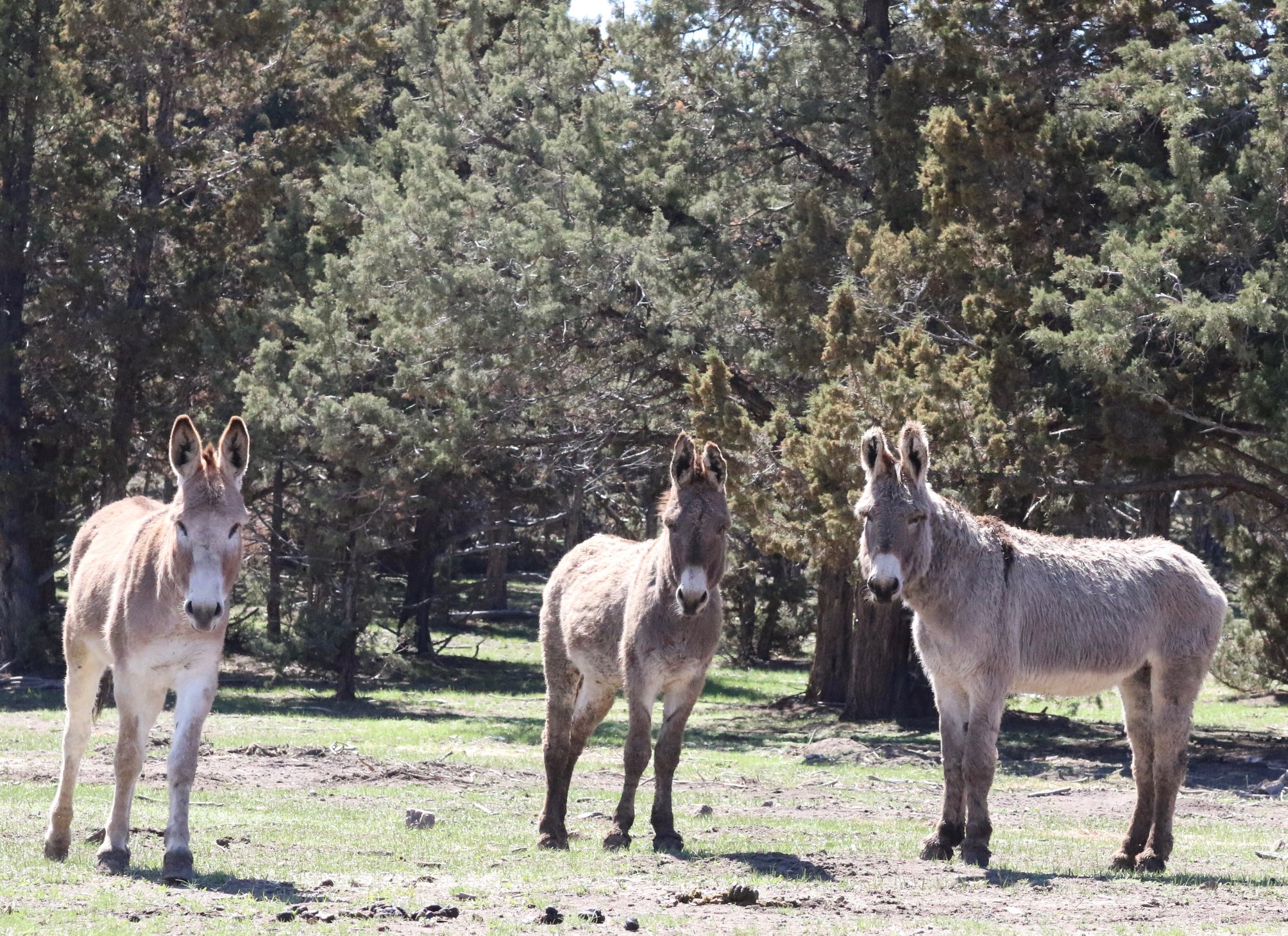burros & donkeys
What is the difference between a Donkey and a Burro?
Burros, asses, and even donkeys are pretty much the same thing. They are all Equus asinus.
"Burro" is the Spanish word for "donkey." Some people make a distinction between the descendants of donkeys introduced into the Americas by the Spanish in the 1500s which they call burros, and donkeys introduced directly from Europe, which they call donkeys. Even people making a distinction between burros and donkeys appear to agree that both, being of the species "asinus," are asses. Jackasses are just "jack asses," or "male asses."
We would however make a distinction between burros and donkeys, wild and domestic. Burros that have been born and lived in the wild have become incredibly hardy, resourceful, intuitive, and are true survivors. They are able to live on very little, with little water and in some states manage to make it through bitter winters digging for food in the deep snow. They have also been documented digging deep wells to reach ground water during drought when water availability from streams decreases; creating water sources used by all wildlife. These desert animals demonstrate a unique ability to adapt to different ecosystems and contribute in beneficial ways to the environment.
The wild burro is a class of small donkeys with an adult weight ranging between 50 and 186 kilograms (110 and 410 pounds), with a height at the shoulders of around 3 to 4 feet. These animals possess long ears and have a short mane, and their coat colors range from black to brown to grey. The average weight of male burros is 122 kilograms (269 pounds), with that of females being 112 kilograms (247 pounds).
Burros in the U.S.A. tend to be taller and stockier than their counterparts found in Mexico and Central America. Burros are extremely sure-footed and are able to carry heavy burdens for days on end amidst harsh, arid environments.
Diet
Throughout most of the year, wild burros forage throughout the day. During the heat of summer, however, they will usually forage in the late evening and early in the morning. These animals are able to survive by feeding on native grasses and forbs, and by browsing on woody plants. They will feed on a wide variety of plant species, including Plantain, Mormon Tea, and Palo Verde. Even though their plant diet supplies a certain amount of water, they also need supplemental water supplies to stay adequately hydrated. They usually select habitats with water bodies within 10 miles of their territories. These hardy animals can survive water losses of as much as 30% of their body weight and are able to replenish such major losses by way of frenetic drinking episodes in as little as 5 minutes.
Habitat and Range
Burros originated in North Africa and were introduced into the New World by the newly arrived Spaniards in the 1500s. These animals are often sighted in the deserts of North America today, such as those in the U.S. state of California, where their habitat extends as far east as Lassen County and as far south as Mono County, and stretches further down into and across the border with Mexico. Populations of burros have been also observed in other arid areas of the U.S.A, Mexico, and some Central American countries. Burros thrive in habitats with vegetation like alkali desert scrubs, sagebrush, Joshua trees, montane chaparrals, and semi-arid pasturelands. Wildlife biologists believe that the rapid proliferation of the wild burro population poses a potential threat for such native animals as the Bighorn Sheep, who share their habitats and native plants for browsing and grazing with wild burros.
Behavior
Wild burros are active throughout the year and are primarily diurnal in nature throughout much of it. In summer, they migrate to riparian areas with smaller home ranges than during other seasons. Their home ranges usually vary between 5 and 70 square kilometers. Males and females have overlapping territories, and males may exhibit territoriality during mating periods in order to access and claim female partners. Unlike wild horses, wild burros do not form family groups, though they may form loosely knit groups whose members temporarily interact to some degree socially. Members of such groups might graze together for a single afternoon, or even for several days, but will finally separate and move on alone. A female and her young one form the strongest social bonds, which might last up to two years in some cases, until they are mature enough to head out on their own.
Reproduction
Wild burros mate all year long, but their peak mating season runs from May through July. The gestation period of these animals lasts roughly 12 months. Hence, a peak in birth rates occurs during roughly the same period as peak breeding, between May and July as well. Females produce one colt each year and usually reproduce in alternate years since breeding and birthing typically occur around the same time. Since the wild burros lack natural predators or competitors within their harsh desert habitat ranges, they can usually survive to live relatively long lives for feral animals. Many colts live to attain sexual maturity and have a good chance to live as long as their expected lifespans in the wild, which are around 25 years.
Credit: World Atlas - animals of North America
Donkey Characteristics
Burros are not easily startled (unlike horses) and have a keen sense of curiosity.
They have a reputation for stubbornness but this is due to their highly developed sense of self-preservation. It is difficult to force or frighten a donkey into doing something it sees as contrary to its own best interest or safety. This is why they don’t do well during roundups and most often have to be roped from the back of a horse and taken to the trap.
Donkeys are more independent in their thinking than horses and will reason, then make decisions based on their safety. Donkeys originate from desert areas of the earth. In the desert environment, a donkey is able to hear the call of another donkey 60 miles away. They have far larger ears than horses. Their large ears also help keep them cool.
Because food is scarce in the desert, donkeys utilize 95% of what they eat which means their manure is not a very good fertilizer for the land. Their digestive system can break down inedible vegetation and extract moisture from food more efficiently.
They don’t like the rain and being out in it for long periods can damage their health as their fur is not waterproof.
INCREDIBLE FACTS
1. They are stronger than a horse of the same size.
2. They can see all 4 legs at the same time.
3. They can vary in size, from 26 inches to 68 inches tall.
4. Their bray can carry up to 60 miles in the desert.
5. They have an efficient digestive system, using 95% of what they eat.
6. They don't like to be in the rain for long periods of time because their coats are not waterproof.
7. They have been used as draft animals for at least 5,000 years and they are still a lifeline for families in parts of Europe, Asia, Africa and South America.
8. Domestic donkeys can live for over 50 years — in the wild, they live from 25-30 years.
9. A blind donkey often bonds with a sighted donkey who will act as a guide.
10. They can have a calming influence on other animals.
11. They are highly intelligent with a keen sense of curiosity.
12. They have an incredible memory — they can recognize areas and other donkeys they were with up to 25 years ago.
13. They are not stubborn but can be reluctant to do anything that could be dangerous - they think things through before deciding what to do.
14. They are extremely agile and can traverse difficult terrain
15. They are social and form strong bonds - you will often see pairs of best friends within a herd.
16. They are different from horses in their physiology, communication, thinking and behavior - they do their best with other donkeys as companions.
17. According to legend, Jesus told God how generous the donkey had been carrying him to Jerusalem and offering to help. After hearing of the donkey's good deeds, God blessed the animal and placed his cross on the backs of all donkeys to mark them as holy.
BLM Herd management areas THAT include wild burros
All of the Arizona HMA’s include wild burros and this is the biggest area that you can find wild donkeys living wild in the Western United States. The town of Oatman AZ has become famous for its wild donkey population who actually reside in the town and have become quite a tourist attraction.
In Oregon, there are donkeys on the Warm Springs HMA only.
In California, there are donkeys on the Centennial HMA, Twin Peaks, Chemehuevi, Chocolate Mule Mountains, Lee Flat, and the Waucoba-Hunter Mountains and the other wild donkey herds are in Nevada. There is also a small herd in Utah in the Muddy Creek and Sinbad HMA.
These wild donkeys are overlooked and not advocated for near as much as the wild horse herds but we would love the numbers raised on the existing smaller AML’s to reflect a healthy genetic diversity moving forward.
There seems to be a perception that feral donkeys can breed out of control but in the USA this cannot be said about most wild herds. The image of the common donkey being a beast of burden and used as work animals for centuries does nothing to promote them as the asset to the environment that they are. They are culturally and historically important and wonderful animals.
The value of these animals should be more widely appreciated and a better relationship forged between humans and donkeys.
We at Skydog Sanctuary love our wild (and rescued domestic), donkeys - burros - asses - call them what you will.
We call them important.
WORLDWIDE CRISIS FOR ALL DONKEYS - WILD AND DOMESTIC
Millions of donkeys are being killed and their skins sold to China for use in traditional medicine. Demand for donkey hide, which is boiled to produce gelatine – the key ingredient in a medicine called ejiao – has raised the price and the rate of slaughter of the animals. Ejiao can sell for up to £300 per kilo and is used as a blood tonic in Chinese medicine.
Many things associated with Chinese medicine usually have alternatives. With donkey hide, for example, you could use other animal forms of gelatine such as beef, pork, or chicken. For vegetarians, seaweed can be used.
The demand for donkey hide is outstripping supply. Around 1.8m donkey hides are traded per year, while global demand is estimated between 4 to 10m skins. Can you even comprehend that number of donkeys? This is decimating the donkey population of the world and causing a massive decline in their numbers. As well as it being horrifically cruel, inhumane, and unnecessary.
IN The beginning, there was a donkey…
The Original Gangster, the OG of Skydog, is Vinnie. I adopted him from a rescue on my first date with Chris, the man I would marry. It was truly a sign of things to come. The donation Chris made to the rescue allowed them to save horses from the slaughter pipeline. For me, this was the first time the existence of horse slaughter in this country came to my attention. For Chris, the thought was if that amount of money could save that many animals, we could save a lot more. SO began the Skydog tradition of saving a donkeys, burros, hinnies, mules, and minis.
The warm springs herd
One of the most exciting and ambitious projects we ever took on was to save the only herd of wild donkeys in the state of Oregon.
When the Warm Springs herd of mustangs was rounded up we spent quite a bit of time at the corrals as the BLM asked us to take some injured and orphaned foals, so we were there during the roundup. During one of those visits, I saw a few donkeys come in and they were being unloaded in the pens. I actually didn't know there were burros in Oregon and it started me down the most incredible journey.
I happened to look at the BLM numbers for wild horse and donkey herds in Oregon as I was writing posts about the horses. I noticed that the number listed by the BLM for donkeys in 2018 was 49 and I saw that the final number of donkeys rounded up in the fall was 41. I was amazed and saddened that so many of the only remaining donkeys in the state had been removed and that there was no intention of turning any back out. If these were any other animals like mountain lions or bobcats they would be managed to build up the numbers, not removed in this way. According to the equine geneticist Gus Cothran of Texas A & M College of Veterinary Medicine, a herd needs 150-200 wild horses or burros to maintain genetic viability and yet the AML for this donkey herd is being managed at a low AML of 25 and the horses at 96.
Looking at the herd of burros it appeared as though there was a degree of inbreeding. I am not a geneticist but the experts I have spoken to seem to agree. Many of these burros don't have tails and lots have short stumpy ears, or one ear shorter than the other, many share the same double line on their back from their dorsal stripe which is also unusual. These burros are amazing, for desert animals to have adapted and been thriving up here in the winter colds is remarkable. These guys need a medal not their freedom taken away and I believe should be studied and observed to find out more about them.
So then began a quest on our part to fight for these remarkable donkeys to be put back out on the land they were born on. This HMA is huge and it would essentially equate to 1 burro per 17,000 acres at current numbers which is crazy. This land can obviously support them, they are extraordinary animals that drink less water than horses and can go long periods without water. I couldn't see a good reason for them to be removed and thought others would agree. I took a meeting with the person in charge and made all the arguments I could for some being put back on the range. But sadly the answer was no. It broke my heart that nobody seemed to see the value in these beautiful donkeys - their beauty, resilience, majesty, and sweetness.
On the NEPA it said that there would be an aerial count in the spring to confirm that there are indeed 30 donkeys still out there as the BLM claim. Sadly, if there turns out not to be, all the boys have now been gelded so it may be too late.
SO the donkeys weren't going to be released and they were now being processed to be adopted out. Split up, families separated, all to go their own different ways - so we offered to take the whole herd. All 41 donkeys. To keep them together, to study them and preserve them, but I was told I had to go through the adoption process like everyone else. So we did our best. The staff at the corrals were so helpful and went out of their way to work with us and it is incredibly much appreciated. We couldn't have done this without their help and a lot of paperwork.
We were lucky enough to have had some beautiful photographs taken by Carol Walker at Living Images who went out to Warm Springs last summer. And Steve Paige from American Wild Horse Campaign kindly let us use some of the photographs he took at the roundup to identify family groups. Burros don't do well at roundups because unlike horses they don't run when chased by the helicopters so they can't be run into traps, because of that they have to be roped which is unfortunate.
These photos (click on pics to scroll) were vital in helping us match groups and families and we also spent a lot of time at the corrals looking at bonded pairs and at mothers who seemed particularly attached to their babies, as well as choosing donkeys who seemed genetically unique and special.
And so operation "Save the Warm Springs Burros" was launched and we traveled to the corrals to pick up ten of the donkeys. Three mamas with their babies still at their sides. And four handsome boys who have already been gelded but are older and less adoptable. We have also offered to take any donkeys who don't get adopted so they too can be part of the study. We still would love to take them. For anyone who adopts one and later on wants to re-home them, they are forever welcome here.
We have done what we can and this is a unique mission for us. We see this as less of a rescue than a preservation project and a field study in wild donkeys. We have been speaking to some incredible organizations that are very interested in studying their behaviors in the wild. Familial ties, herd behavior, how far they travel each day, forage, and water habits. I am beyond happy to have our herd of Warm Springs donkeys - families reunited, bonded friends together, babies and mamas. We will probably have more babies in the spring when the pregnant Jennies foal.
As with many things, it isn't the end result we had prayed for but it is the next best thing.
Here is more of their journey in video and photographs (click on pics to scroll through), now living wild and free at Skydog Oregon…
These donkeys are beautiful and well worth preserving. There is one Jenny who is hugely tall and has the most regal and stunning features. There is one family of peach and orange-colored donkeys. I saw them the day they came in as I took photographs and its beautiful to look out and see them today still together. I truly never knew that they were going to end up here. Come the Spring we are going to turn them all out on a portion of the ranch we can't use for horses and they can go back to living wild in their family groups, back to being burros again.
More than anything I would love it if Oregon realized just how special, hardy, smart and magnificent these burros are and treated them with the respect they deserve. These are your public lands and your donkey herd. I wish we had been able to do better by them.
When we posted these guys on our Instagram and Patreon it was surprising how many comments indicated that people had no idea there even was such a thing as wild donkeys, so we already feel we have begun our job in raising awareness for them. Donkeys have been such a huge part of our sanctuary from the start that it's been a dream come true to honor this wild herd that is so local to our sanctuary in Oregon. They already seem to recognize and know the land and seem happy to be home - they are comfortable, calm, and curious but still beautifully wild the way we want to keep them.
